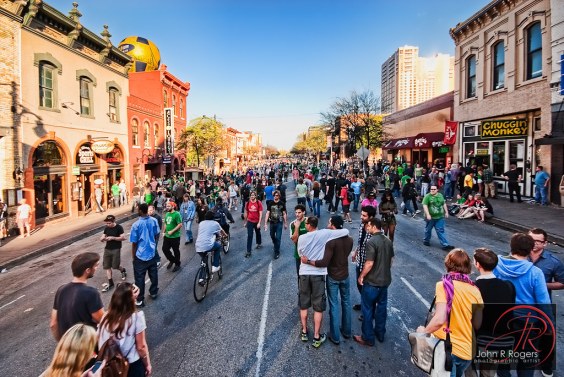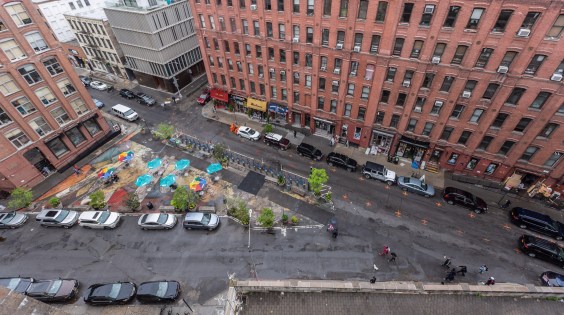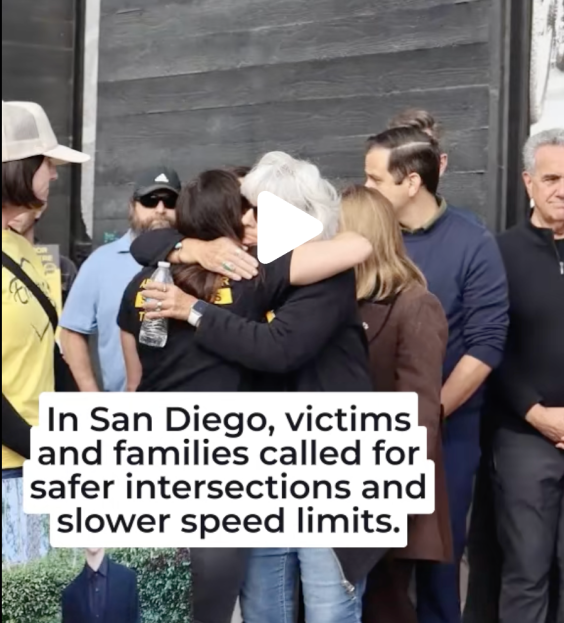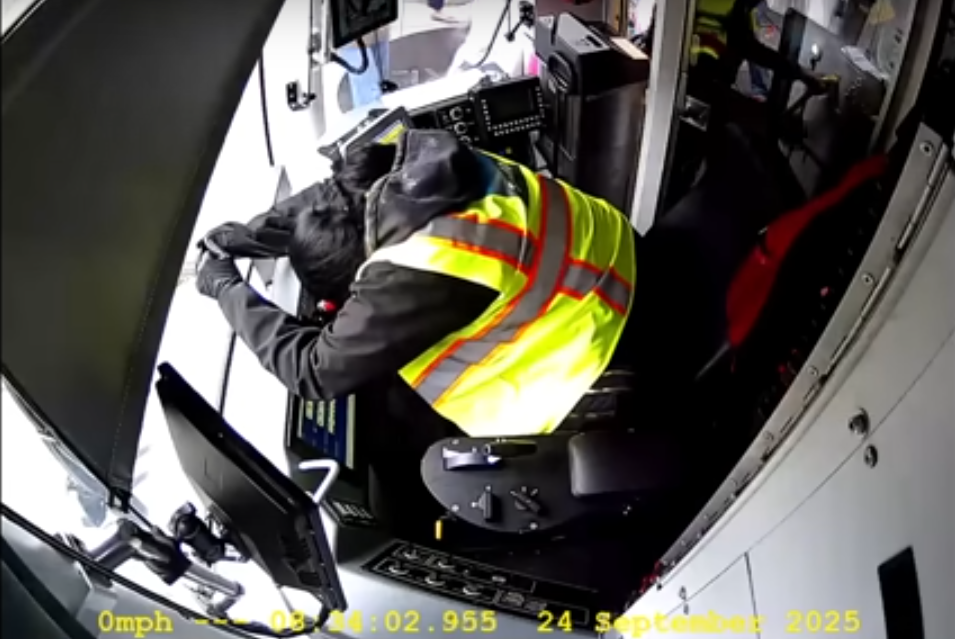The Transportation Research Board’s 99th Annual Meeting will be held in Washington, D.C. from Jan. 12-16, 2020. Click here for more information.
American voters say transportation is low on their priorities. But that's mostly because elected leaders have failed to articulate — and execute — a vision for reducing our century-long addiction to cars and improving transit so the future will be sustainable.
Here are 11 inflection points to watch this year. How they play out will say a lot about the nation we intend to be:
Cities adapt to micromobility
Electronic scooters, dockless electric bikes, and mopeds have been multiplying in communities across the country, yet few cities are redesigning streets to accommodate the new devices. Some have even tried removing them, restricting their hours, or banning them entirely (looking at you, Gov. Cuomo). Other places like Santa Monica understand that scooters give people more options to travel and taking cars off the road. This will be an inflection point in 2020. Cities can either add more protected pathways to make it safe for scooter users to travel or refuse to cede roadways and risk further driver-led carnage.
Zoning and density become campaign buzzwords
Housing policy, like transportation, has taken a back seat to other issues like health care in the Democratic presidential primary. But affordable housing is the top priority of African-American women voters, according to a national survey — and the solutions to building that housing could expose real fault lines among progressive and centrist candidates. With states like Oregon already targeting single-family zoning and cities looking to eliminate mandatory minimum parking requirements to encourage density, expect discriminatory zoning practices to become a hot topic as the primary season starts to heat up early next year.
The FAST Act adds transit funding ... or gets postponed
The five-year surface transportation bill is set to expire in September. Members of Congress have been slowly marking up different parts of the legislation with highways set to receive $287 billion. Yet transportation advocates warn there shouldn't be any new funding for new highways when we have so many existing roads and bridges that need maintenance first. And progressive Democrats in the House also want to change funding formulas so that transit gets more than its usual 20 percent of the pie. Meanwhile, the Trump administration has been anything but transit-friendly, and has fought with states over emissions standards.
Transit ridership rebounds
Ridership figures for rail and bus lines have been declining in many localities for much of the decade, but customers can be won back. The cities that have had success reversing these trends have improved bus service and invested in maintenance of rail systems. And as frequency improved during off peak hours, nights, and weekends, passengers returned and in some cases started to grow. TransitCenter's Steven Higashide's new book, "Better Buses, Better Cities," is a great place to start understanding how a healthy bus system with leaders who deliberately seek to improve service can reinvigorate communities. Look for more red painted bus-only lanes, improved traffic signaling and signage, car-free busways, all-door boarding, and offsite fare collection coming to your streets. And if not, better start your power mapping!
Congestion pricing evolves
New York successfully passed congestion pricing this year after a decade of advocacy, but the actual pricing and implementation plan has been slow to materialize before the January, 2021 deadline. Other cities have started to consider dynamic pricing, but few are blazing ahead with any urgency. Los Angeles officials have discussed tolling the 405, the D.C. City Council is studying how congestion pricing could work on District-controlled bridges, and advocates have pressed for dynamic pricing on Boston-area toll roads to alleviate the nations worst gridlock. Whatever the plan, prices must be high enough to disincentivize driving and change behavior. Revenue generated afterward for transit and road maintenance is merely gravy.
Free transit spreads
Kansas City made waves as the largest metropolis in the nation to stop charging bus fares. The free transit experiment (its light rail system is already free) caught the nation's attention and advocates in other mid-sized cities are already clamoring for free fares in their towns. Kansas City's fare program will start in early 2020 as soon as the city sets aside $8 million to fund the program. If RideKC can show some success in boosting ridership and maintaining frequent service, other localities could follow.
Fascination with electric and AVs fades
Yes it was hilarious when Elon Musk's impenetrable Cybertruck couldn't handle a couple of small rocks. Less hilarious was the fawning coverage that electric and autonomous vehicles typically receive at auto shows and in the press generally. SUVs remain the biggest problem in transportation in their ability to destroy the planet with harmful emissions and run over pedestrians in their path. But electric vehicles still cause carbon emissions through their production and create congestion through their frequent presence on the road. And driverless vehicles are still very much an untested safety hazard. Just look at Tesla's autopilot program, which has led to several wrongful death lawsuits. The media must stop getting obsessed with electric and autonomous vehicles at the expense of more-efficient forms of transportation (aka transit).
Emissions caps and wider pedestrianization
In the Trump era, when the White House seeks to undermine states like California that want to uphold stricter fuel economy standards, it is hard to be optimistic about efforts to reduce driving and increase walking. But cities are trying to cap emissions from buildings while northeast states are developing a cap-and-trade plan for transportation emissions that would encourage less driving with higher gas prices. Making neighborhoods more walkable is harder, but cities are pursuing an array of strategies to spur development near transit stations, adjust zoning to allow more multifamily housing, lower speed limits, and build sidewalks and crosswalks in areas where people are already living and likely to walk. Hopefully more regions like Montgomery County establish plans specifically for pedestrians.
Anti-transit backlash from car owners
Make no mistake, the anti-transit backlash is coming. We probably haven't seen the last of campaigns Tim Eyman's ballot initiative to lower car registration fees. The ballot measure is mired in the courts, but the campaign could find success in other states where transit is funded through vehicle-based levies like registration fees and the gas tax. Some states may shift revenue collection from a gas tax to one that charges vehicle miles traveled to penalize higher driving, but any initiative to increase taxes on motorists could be a tough sell in 2020.
'Smart Cities' privacy backlash
Toronto officials had worked diligently with Google parent company Alphabet executives to turn a 12-acre swath of land on the waterfront into a "smart city" that would use machine learning to and artificial intelligence to determine how a neighborhood's housing, transportation and energy use would be designed and managed. Alphabet would also use sensors to collect data from residents and city services to make improvements, becoming a new vision for urban living. But 2019 was the year that Americans and their Canadian counterparts turned against Big Tech. Residents rightfully freaked out about privacy concerns and where Alphabet would sell data, causing Alphabet and Toronto to scale back its plans. The reaction showed that cities and not private corporations should always be in the drivers seat when it comes to collecting and using data that affects neighborhoods.
Immigrants move to small cities
Immigration is vital to growth in America — and an influx of young immigrants traditionally bolsters aging populations in many cities, contributing nearly a third of the population growth of the country's top 100 metropolitan areas. But the cost of living in coastal cities is so high that immigrants are increasingly moving to smaller cities such as Akron, Tampa, Indianapolis, Omaha, Raleigh, Charlotte, Jacksonville, and Orlando. Those areas have decent economic opportunities, Axios reported, but population growth will force city and suburban county leaders to improve transit to help this growing labor force connect with jobs. Will leaders in the Midwest and the South be up to the challenge?






